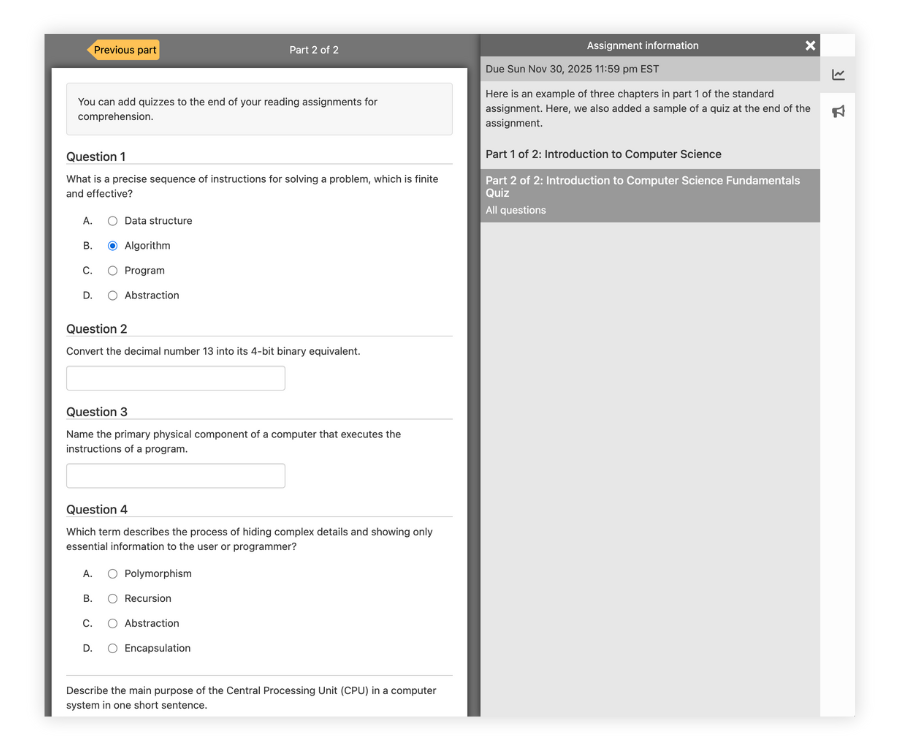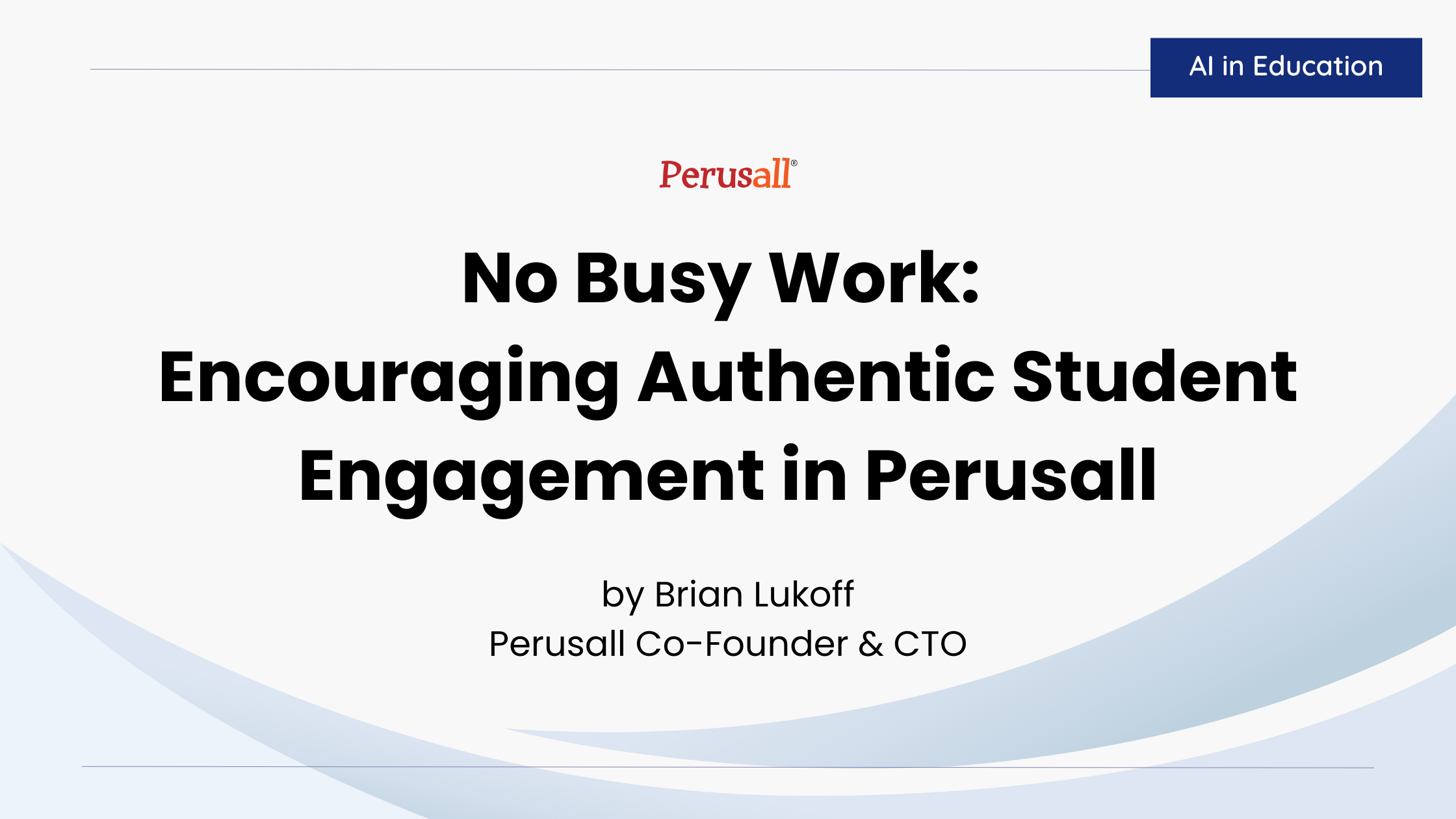Kelly Miller, Perusall Co-founder and Senior Lecturer in Applied Physics in the School of Engineering and Applied Science at Harvard University, shares some effective ways you can encourage authentic student engagement in your Perusall courses.

This fall, my personal goal is simple: tweak what I’m already doing so I can use Perusall better than I have before. With so many features and customization options, small changes, like using quizzes more intentionally, I can already move closer to authentic student engagement in an era shaped by AI.
Break up the reading into smaller sections
Students engage more authentically when the task feels manageable and less transactional. By assigning shorter sections in your course, it becomes easier for them to focus on the key ideas and come to class prepared to discuss them. Too often, students know they have to leave a comment but aren’t sure how to make it meaningful. Shorter tasks help move engagement beyond “busy work.”
Add quizzes at the end of readings

This term, I’m leaning more on Perusall’s quiz feature to give students a clear reason to work through the text carefully. At the end of each section of reading, I have inserted a short, multiple-choice quiz which students must complete before moving onto the next section of text. Then, at the end of each assignment, I have inserted an optional quiz with more involved open-ended questions (which involve synthesis of the entire text). Students who decide to complete these end-of-assignment quizzes will get credit so that their assignment score relies less on annotations (see scoring template section below). Quizzes provide accountability, help check comprehension, and ensure students walk away understanding the essentials. Although I don’t necessarily discourage AI usage in my course for comprehension, short quizzes can help students focus on what matters most and confirm their understanding.
Adjust the scoring template of assignments
Students learn in different ways and not all students are going to want to engage with Perusall in the same way. To adjust for students’ learning preferences, set the Scoring Function up in such a way that there are many different paths to getting 100% on a Perusall assignment. Adjust the weightings so that they add up to more than 100% so that students can get full credit by engaging with Perusall in different ways. For example, if you are using quizzes (which I highly recommend!) set the weighting of the quizzes to 100% (or close to it) so that students can choose to do quizzes instead of having all of their score based on annotations.
By counting quizzes more toward participation and allowing students to earn full credit by completing them, you can shift engagement from transactional (“I write this annotation to get this grade”) to purposeful interaction with the material. When students feel less pressure to perform, they’re also less likely to turn to AI shortcuts.
Kelly Miller is an Associate Senior Lecturer in the Harvard's School of Engineering and Applied Sciences. She received her B.Ed. in secondary school science from McGill University, and her Master's in physics from the University of Vermont. Kelly received her Ph.D. in applied physics from Harvard University in 2014.
Before graduate school, Kelly taught middle and high school science at various schools in Toronto, Rosseau, Montreal, and Vermont. She spent a year sailing around the world while teaching physics for Class Afloat, an experiental education program for high school students onboard a tall ship.
While teaching high school physics, Kelly developed a passion for teaching and scholarship in education. Her Ph.D. focussed on the use of technology and interactive teaching strategies in undergraduate physics classrooms. She currently teaches Applied Physics 50, a flipped, introductory physics class for engineering undergraduates at Harvard. She is also a Co-founder of Perusall, a collaborative reading platform to help get students prepared for class.
Stay tuned for upcoming posts in the series by Eric Mazur and Gary King.
Want to try out Perusall? Join us at the Perusall Academy, our free guided training series, to get started with your course.



.png)




